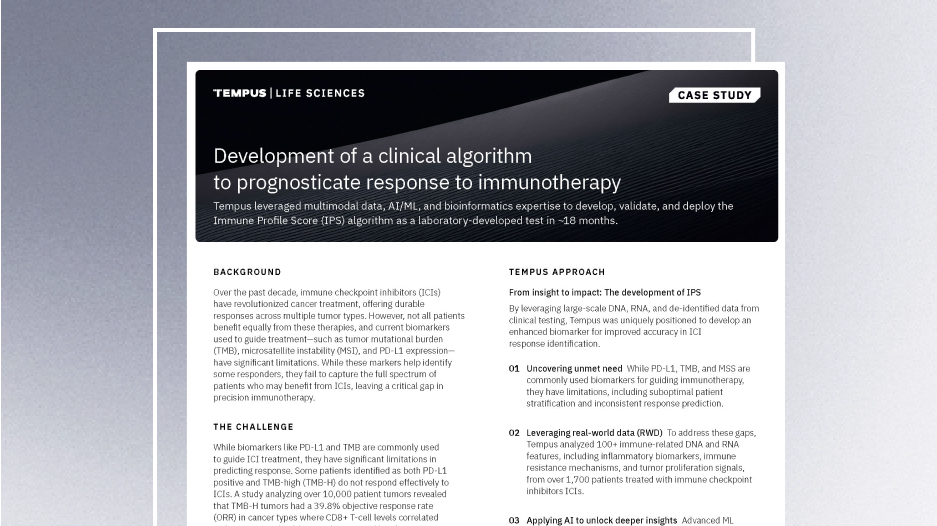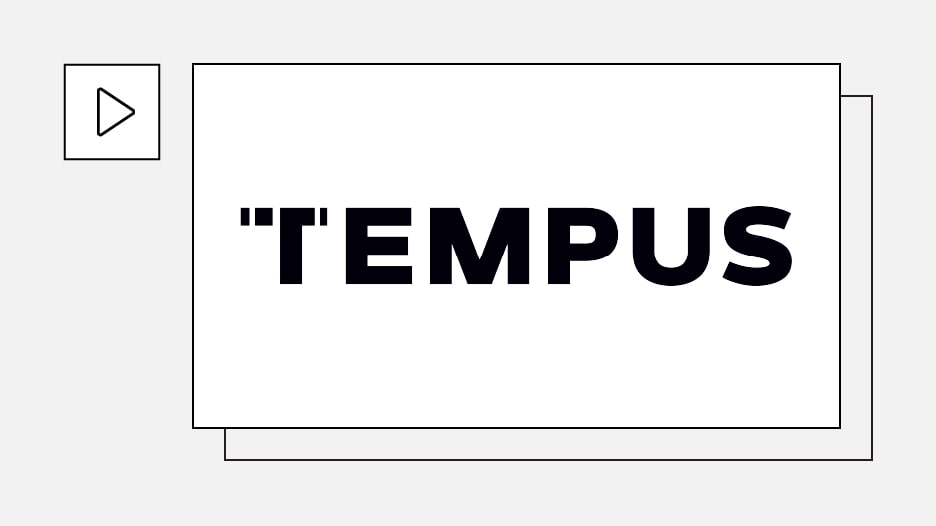-
PROVIDERS
Register now
Are you getting the full picture? A webinar series on the power of comprehensive intelligent diagnostics
-
LIFE SCIENCES
REGISTER NOW
AI & ML in action: Demonstrating real-world impact in trial design & patient careThursday, June 12, 2025
11 AM PT / 1 PM CT /
2 PM ET -
PATIENTS
It's About Time
View the Tempus vision.
- RESOURCES
-
ABOUT US
View Job Postings
We’re looking for people who can change the world.
- INVESTORS
11/22/2022
Dual testing in metastatic breast cancer
Tempus research exploring the concordance of pathogenic variants across a variety of criteria for metastatic breast cancer patients.
Authors
Matt MacKay, PhD
Director, Molecular Analytics, Tempus

Director, Molecular Analytics, Tempus

Research summary
Tempus offers both a tissue based NGS assay (Tempus xT) as well as a cell-free DNA (cfDNA) NGS assay (Tempus xF), allowing clinicians flexibility in their diagnostic decisions. However, while each modality offers different benefits, concordance between the two types of tests is a source of ongoing study. To address this, Tempus researchers evaluated the concordance between Tempus xT and Tempus xF relative to cfDNA sampling frequency in a large, clinically annotated deidentified metastatic breast cancer (mBC) data set using the Tempus Lens platform. The team investigated the concordance of pathogenic variants across genes, time between tests, the variant allele frequencies, and mBC subtypes.
The study reviewed the records of 300 patients with stage IV mBC, 94% of which had at least one pathogenic alteration found between ctDNA biopsy and tissue NGS. When tissue and blood collection were ≤ 7 days apart (n=56), 77.8% of pathogenic tissue variants were found within each patient’s cfDNA, and 75.7% of pathogenic cfDNA variants were found within each patient’s tissue, showing high concordance of variant detection for each patient. At the individual variant level, 20% of pathogenic variants were uniquely detected by xF liquid biopsy, while 18% were detected solely in tissue by xT (fig.1). Notably, all ESR1 variants were more likely to be identified when analyzing cfDNA (cfDNA-only or concurrent) than tissue samples alone (fig. 2). Combined testing with xT and xF may provide a more complete picture of the patient’s genetic landscape than either testing method alone.
The concordance observed (62% concordance, ≤7 days) suggest that cfDNA NGS may reliably represent tissue genomics, but the increase in discordance over time also suggests a possible evolution of tumor genomics that can be measured by sequential testing with Tempus xF. Additionally, the detection of unique variants by each testing modality may indicate that using both tests could increase the overall variants detected compared to using either individually.
Next steps
Contact Tempus to discuss the findings with our team, and learn more about concurrent testing in breast cancer patients.
Unique variants may be detected between tissue samples and cfDNA
Figure 1
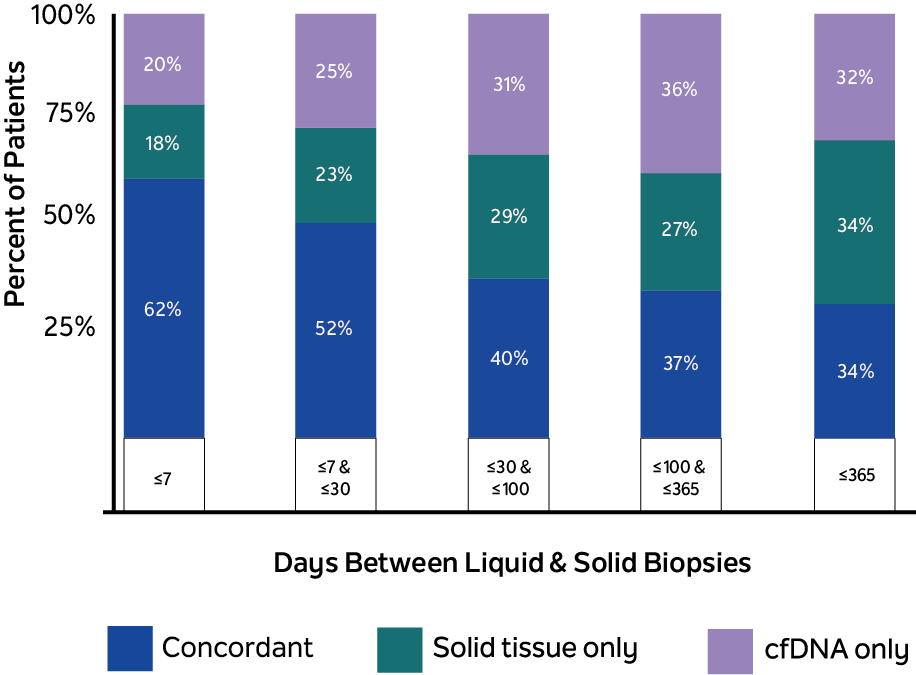
20% of pathogenic variants were uniquely detected by xF liquid biopsy
18% were detected solely in tissue by xT
18% were detected solely in tissue by xT
ESR1 variants were more likely to be identified when analyzing cfDNA (cfDNA-only or concurrent) than tissue samples alone
Figure 2
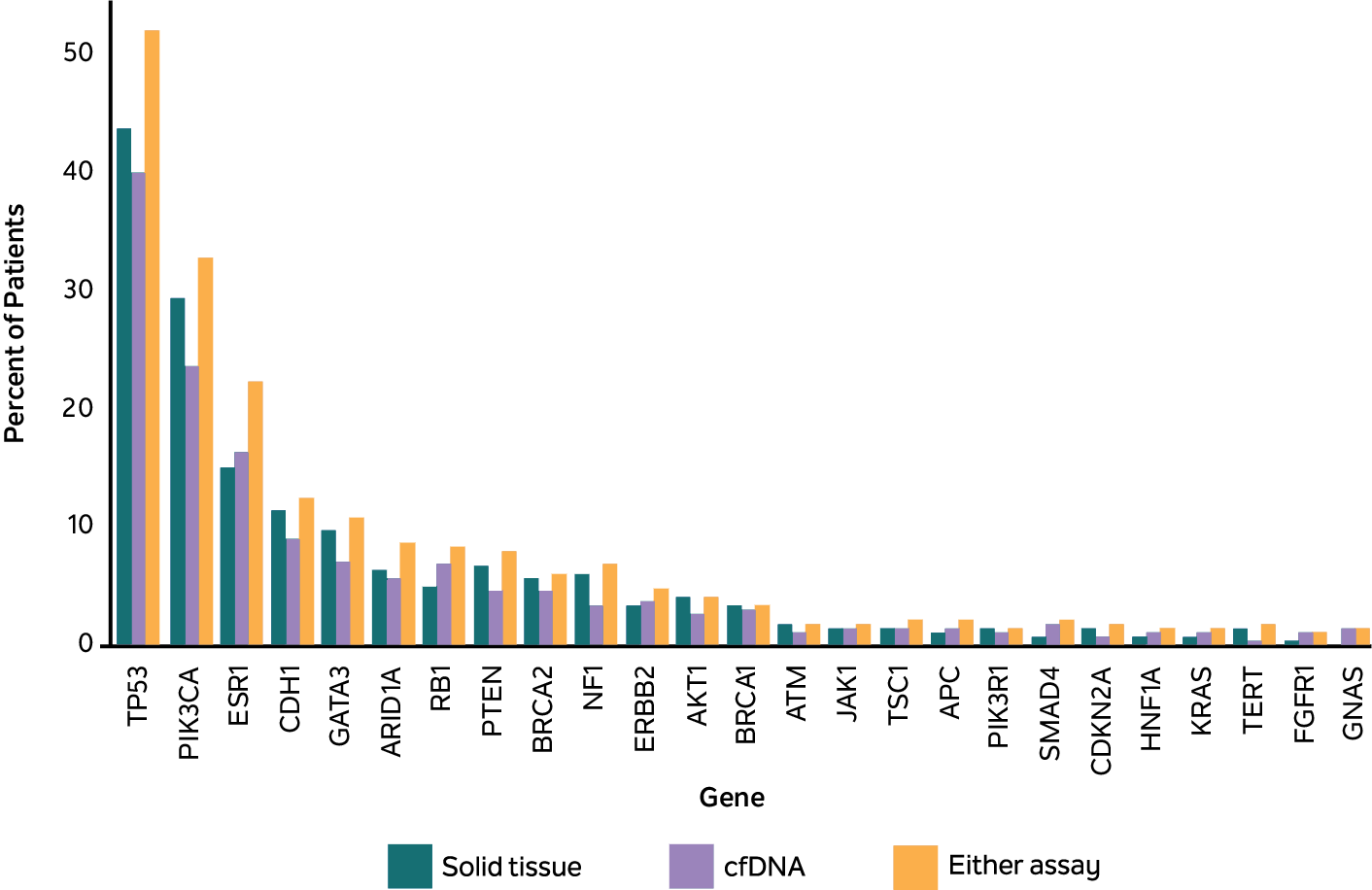
Shown are the % of MBC patients with ≥1 of the top 25 most common pathogenic variants in cfDNA (green), tissue (blue), and either test (purple), as assessed using the Tempus xF, xT, or xF/xT assay and the Tempus LENS platform.
Liu MC, et al. JCO Precis Oncol. 2022;6(1):e2100321.
READ THE MANUSCRIPT
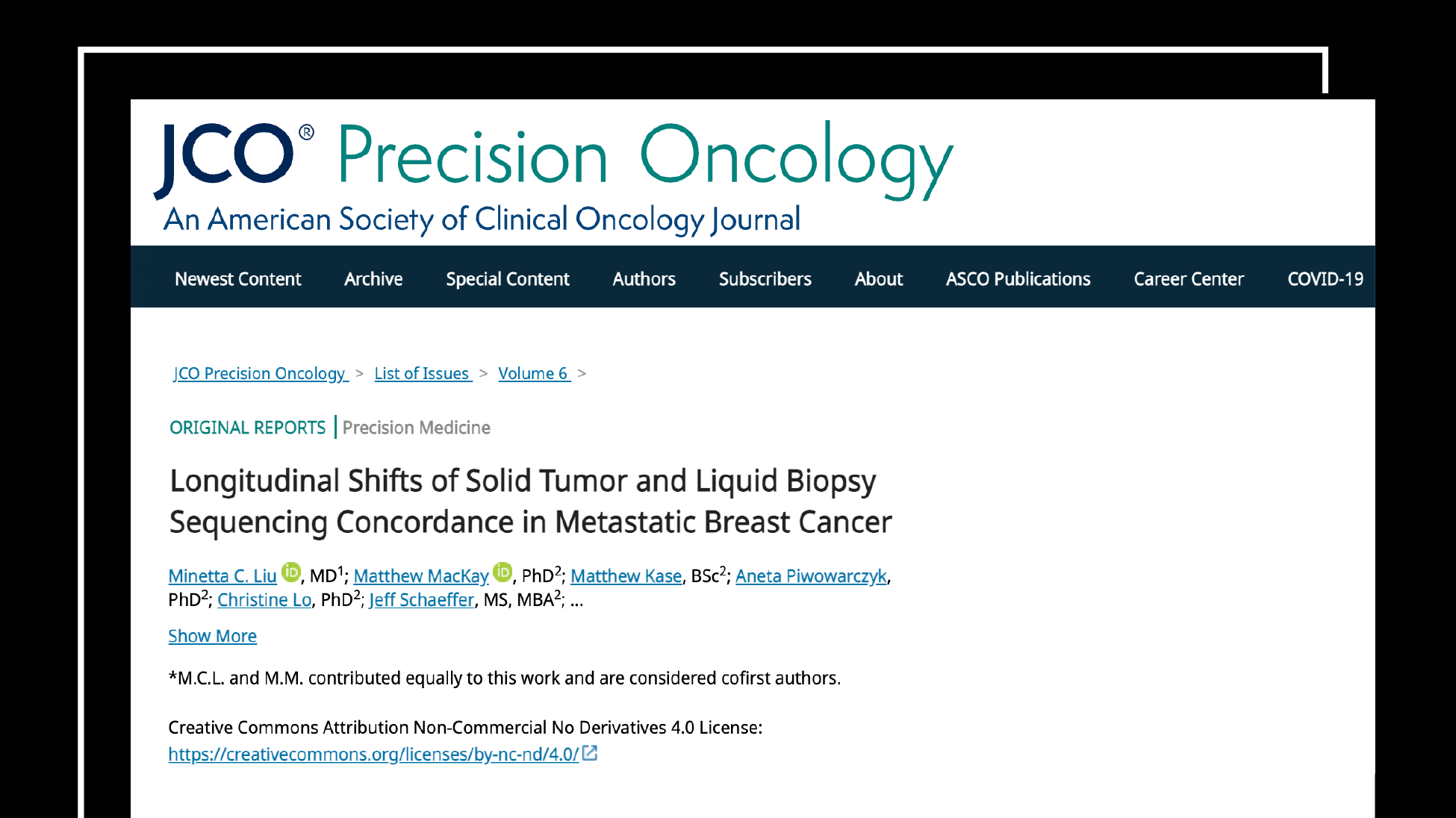
-
03/25/2025
The RNA advantage: A multimodal approach to accelerating oncology R&D
Discover how transcriptomic data and multi-omics data integrated with AI is helping revolutionize oncology drug development and patient care and fueling precision medicine 2.0. Learn about RNA sequencing’s role in companion diagnostics and Tempus Loop’s capabilities to support target identification and validation.
Watch replay
Secure your recording now. -
04/02/2025
Development of a clinical algorithm to prognosticate response to immunotherapy
Discover how Tempus developed and deployed the Immune Profile Score (IPS)—a powerful algorithm that provides prognostic insights into patient outcomes following treatment with immune checkpoint inhibitors (ICIs)—in ~18 months. This case study highlights the AI-driven methodology, real-world validation, and the impact of IPS in precision oncology.
Read more -
03/25/2025
AI & ML in action: Unlocking RWD with GenAI through Tempus Lens
Discover how Tempus is equipping researchers with innovative AI solutions to fully leverage the potential of multimodal data. Gain insights from a panel of leaders across healthcare and life sciences as they discuss the impact of these advanced tools on delivering insights with speed.
Watch replay
Secure your recording now.

